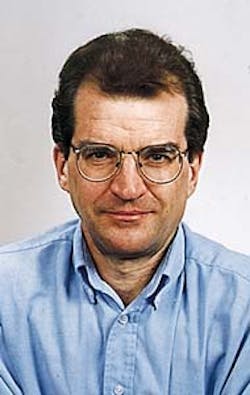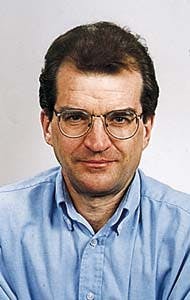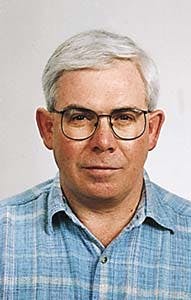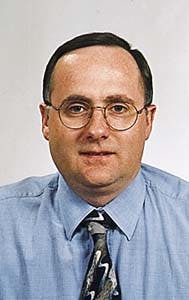Canadian crude terminal resolves tank-odor problems
Robert Wrubleski, Gordon Ferg, Daryl Perrin
Shell Canada Ltd.
CalgaryDayle Chadbourne
Amoco Canada Petroleum Co.
CalgaryDavid Picard
Clearstone Engineering Ltd.
Calgary
- Light steel covers, designed to lift in the event of overpressure, are installed on the roof vent openings. Two of the vents are used as air inlets and are equipped with adjustable openings, shown here, to set the pressure and flow balances. [9,789 bytes]
- This skid contains the two parallel sets of detonation arrestors and blowers. Normally, only one system is in operation with the other as standby. Blowers are variable-speed drive with flow regulated by hydrocarbon level (LEL analyzer) in the air-vapor line from the tank. [16,384 bytes]
Remediation of significant odor problems at a crude and condensate shipping terminal in Alberta required a major effort to identify the source of the problem and install control facilities.
- The oxidizer is fired by natural gas and achieves greater than 99.5% conversion of odorous sulfur compounds. Any volatile organic compounds are also destroyed, giving virtually total odor and vapor control. [20,622 bytes]
The Rangeland Pipeline system, in the oil and gas producing areas of Alberta, transports crude oil and gas condensates from the southern and central regions to link to the Interprovincial Pipeline system at Edmonton.
An odor associated with tankage at a pipeline pump station located near Sundre, Alta., persisted where several crude and gas condensate tanks, all containing internal floating roofs for vapor control, had been installed over the years.
Most recently, a new tank was built to handle additional condensate from Shell Canada's new Caroline gas-processing plant. This particular condensate is produced from a highly sour (33% H2S) reservoir and contains correspondingly high amounts of other reduced-sulfur compounds (RSCs) including light and heavy mercaptans and thiophenes.
After the tank was commissioned, odor complaints from farm residents in the vicinity increased.
In response to pressures from the community and the local regulator, a detailed odor sourcing and remediation program was undertaken.
Determining the source
As a first step, all of the crude oil and gas condensate tanks were sampled in the head space above the internal floating roofs.Detailed analyses by sulfur chemiluminescence (detection limit 0.1 ppm for individual compounds) showed that most of the tanks contained H2S and some heavier RSCs, but the condensate tank in question had appreciably higher levels of the latter compounds (Table 1 [59,526 bytes]). Dispersion-model calculations confirmed that odor thresholds could be exceeded at local ground-level receptors.
A program of careful odor monitoring was started, including registering of complaints and formal reporting by employees of the local Shell gas plant when they detected odors while driving by on the adjacent highway.
This regular monitoring determined that the odor was caused by the Rangeland terminal and not other oil field operations, and most likely the Caroline condensate tank in particular because of the uniquely mercaptan-dominated characteristic odor of the condensate. It was judged unnecessary to attempt any ambient sampling because the specific odor source was known and in-tank sampling had identified the species of concern.
Further, such ambient sampling requires a rigorous and expensive procedure to detect compounds at odor threshold levels (parts per trillion).
First attempt
When built, the tank was equipped with an internal pontoon floating roof consisting of standard roof fittings and a single vapor mounted (wiper) rim seal. This arrangement is widely used at oil and gas facilities for vapor control on large crude oil and hydrocarbon-condensate tanks.However, guidelines recently issued by the Canadian Council of the Ministers of the Environment (CCME) for control of emissions of volatile organic compounds from aboveground storage tanks specify one of: a liquid mounted seal, a mechanical shoe seal, or a vapor mounted seal with a rim-mounted secondary seal.
The logical first step in addressing the problem appeared to be to evaluate the impact of simply upgrading the seals on the floating roof for the following reasons:
- Using other types of control options would be substantially more expensive.
- Another operator had reported good success in controlling odors in similar internal floating roof tanks by implementing improved sealing technologies.
- It would likely be ultimately necessary to upgrade to CCME guidelines.
This estimate, however, was based on the higher limits of the applicable odor threshold ranges available in the literature and was recognized as being potentially optimistic. This risk was accepted and the decision was made to upgrade the seals as a first measure.
The rim seal was changed to a double seal and the seals for all roof penetrations (columns, ladders, etc.) were replaced with double seals. Additionally, of the original 90 1-in. stub drains in the floating roof, 16 were fitted with Teflon flapper valves, and the rest were plugged.
The rim-seal arrangement consisted of a new mechanical shoe seal as the primary seal and a new wiper seal as the secondary seal (Fig. 1 [59,743 bytes]). Innovative designs for the roof-penetration seals were developed in cooperation with Sandborn Roofs Inc., Nisku, Alta.
Typical features are shown in Fig. 2[62,087 bytes]. The total cost to implement the changes was $150,000, including tank entry, cleaning, hardware purchase, and installation.
After the tank was returned to service, it soon became evident the odor issue had not been resolved, as the odor complaints continued. Follow-up vapor-space sampling verified appreciable levels of volatile organic compounds (VOC) and odor compounds still existed.
Since the seals had been upgraded to the best available technology, the remaining losses were attributed to wall losses caused by frequent movements of the floating roof. Since the mode of tank operation could not be changed (pipeline batching) and control by roof seals alone was inadequate, it was determined that total vapor capture was the only workable remediation approach.
Vapor-control system
Total vapor capture from an internal floating roof installation is an uncommon approach, and no API standards exist for this arrangement. A general literature review 1 2 and brainstorming sessions were conducted to develop a list of potential configurations.The options for tank-vapor control were identified as follows:
- Inert or rich gas blanketing (Fig. 3 [60,653 bytes])
- Full vent flow air sweeping (Fig. 4 [61409 bytes])
- Reduced vent flow air sweeping (Fig. 5 [60,754 bytes]).
Option 2 is based on providing an air-rich atmosphere by maintaining an air-flow rate through the tank similar to that calculated in API Publication 2519 for free venting above an internal floating roof. In this case, the air flow dilutes any hydrocarbon vapor to maintain a nonflammable atmosphere under all conditions of wind, vapor pressure, etc.
The arrangement requires all of the existing air vents to remain open, with an air mover flow adequate to ensure that air is drawn into all of the vents at the required rates.
Option 3 is based on closing in the tank's vapor space to minimize wind scavenging effects and therefore reduce the air flow requirement. Air is drawn through a reduced number of vents (1 or 2) and only at a flow rate to maintain the vapor space hydrocarbon concentration at a safe level below the lower flammability limit.
In all cases, a significant issue was the pressure and vacuum limitation of the API 650 tank which is rated at 1.5 in. pressure and 1 in. vacuum (water column).
Alternatives for capture or destruction of the collected vapors from the these control methods were thermal oxidation, activated carbon, chemical (liquid) scrubbing, and biofilter.
Interim solution
As a first step, it was decided to install the odor-abatement system as a temporary facility. This was justified on the basis of being able to address immediately the odor complaint situation as well as test out a selected vapor capture and control scheme.A technology, safety, and cost study showed that the low-flow vent case (Option 3) was the preferred approach for vapor control, with either thermal oxidation or activated carbon for destruction or capture.
Table 2 [176,151 bytes] shows the pros and cons of the various scheme combinations. It can be seen that the full-vent scheme involves a very high air-sweep flow rate, making the cost prohibitive.
Rich-gas blanketing has major drawbacks, including gas consumption and the risk of pyrophoric iron generation with a reducing atmosphere in the presence of sulfur compounds.
The main issue with the low vent rate approach involves the potential buildup of an explosive mixture upon high product vapor-pressure excursions, roof component failure, or shutdown of the vapor collection system. After a detailed hazardous operations (hazop) review, it was determined that with appropriate safeguarding design, instrumentation, and controls, the system could be run safely.
One feature is the ability to open the temporary vent covers on the tank to allow the tank to revert to its original free-venting operation if the abatement system becomes unavailable for extended periods. It was determined through calculations, and later by field demonstration, that it would take a number of hours for the mixture concentration above the roof to build up to unsafe levels upon an inadvertent shutdown of the blower system.
The arrangement selected for the interim facility is shown in Fig. 6 [60,779 bytes]. Following are the main features:
- Flexible connection line (20-in. diameter) from the tank
- Two parallel vapor collection systems containing blower and activated carbon
- Discharge to vent stack
- Safeguarding features: detonation arrestors, lower explosive limit (LEL) analyzers, flame arrestors, temperature sensors, shutdown instrumentation, and the option for nitrogen inerting on shutdown.
For this test, a small storage tank was set up and filled with the sour condensate. The tank was purged with nitrogen to provide the required concentration of off gas through a set of test carbon beds. Purge and product gas samples were collected for analyses, and the carbon was sent to the vendors for adsorbed component analysis and material balancing.
A two-stage carbon system provided by Barnebey & Sutcliffe Corp., Carson, Calif., was chosen, consisting of regular carbon in the first stage and an impregnated type in the second. The pilot test showed that carbon would successfully trap all of the odor compounds, although the hydrocarbon VOCs would essentially all pass through after a short period of operation.
This interim facility was installed within 30 days of approval to proceed and operated for 4 months during which the permanent project was being planned and implemented. The interim facility was successful in controlling the odors and demonstrated that safe levels of hydrocarbons (5% of LEL) could be maintained in the tank headspace above the floating roof at the selected design flow of 300 std. cu ft/min.
Fugitive leaks from the temporary fittings and equipment were difficult to control and caused a moderate amount of odor in the immediate vicinity of the facility. Operations staff manned the facility full time until there was confidence in the system reliability and safety.
Permanent facility
The permanent design (Fig. 7 [60,901 bytes]) was based on the successful performance of the interim facility and contains the same features for tank operation, use of dual blower trains for reliability, detonation and flame arrestors for explosion protection and instrumentation for LEL, and high temperature detection and shutdown.It was decided, however, to employ a single thermal oxidizer for final odor compound control.
Thermal oxidation was chosen for two reasons: to ensure all VOCs including benzene would be destroyed, and to hold operating costs for fuel to less than regular carbon purchases plus hazardous-waste disposal.
Because the tankage terminal is operated unmanned for most of the time, the system was linked to the main terminal distributed control system (DCS) system which is monitored at the Amoco regional control center in Olds, Alta.
The permanent system was installed at a cost of nearly $1 million (Canadian). It was commissioned in July 1996 and has performed well.
Odor incidents did occur during initial operation as a result of inadvertent shutdowns during debugging of the PLC system. The absence of any odors in the vicinity of the Rangeland terminal during normal operation, however, has shown that the odor abatement project is successful.
Performance testing
The thermal oxidizer destruction and removal efficiency (DRE) was guaranteed at 99.8 % to ensure an appropriate conversion of odor compounds. A test program was conducted to verify the effectiveness of destruction and overall odor mitigation.Given the low levels of the residual odor compounds (RSCs) in the oxidizer stack gas, it was impossible to verify the DRE with standard gas-sampling and analytical methods. Therefore the H2S and other RSCs were analyzed qualitatively on site in the grab-stack samples with a hand-held Jerome 621 analyzer from Arizona Instruments Corp., Phoenix.
Odor-panel testing was also done on the feed gas and stack gas streams by TRC Environmental Corp., Windsor, Conn. For this, 10 l. Tedlar bag samples were sent to TRC's odor lab. The panel determined that no response could be detected on the flue-gas samples with a dilution factor of 100-200. Dispersion modeling verified that ground level dilutions would be at least several hundred fold beyond this factor.
Public sensitivity
Odors from industrial operations, including oil and gas production, are an ongoing issue, with the public becoming more and more sensitive.Because of the low detection levels of sulfur-based compounds, they are a significant nuisance issue even at concentrations well below applicable health standards.
Control approaches are not straightforward, however, as evinced by this particular project. Further, such systems are expensive to install and require carefully developed safeguards and operating procedures to ensure safe operation.
References
- Laverman, Royce J., "Emission Reduction Options for Floating Roof Tanks," CBI Technical Publication CBT-5565, presented at the Second International Symposium on Above Ground Storage Tanks, Houston, Jan. 14-16, 1992.
- American Petroleum Institute, 1993, Vapor Collection and Control Options for Storage and Transfer Operations in the Petroleum Industry, API Publication 2557, Washington.
Robert Wrubleski is an environmental technology specialist with Shell Canada Ltd. in Calgary. He holds a BS in chemical engineering from the University of Saskatchewan.
Gordon Ferg is a storage tank and inspection specialist with Shell Canada Ltd. He holds a BS in mechanical engineering from the University of Manitoba.
Daryl Perrin is a specialist in distillation and process safeguarding with Shell Canada Ltd. in Calgary. He holds a BASc in chemical engineering from the University of Ottawa and is a registered professional engineer in Alberta.
Dayle Chadbourne is a staff business development engineer with Amoco Canada Petroleum Co. Ltd., Calgary. He holds a BS in petroleum engineering from the University of Alberta and a petroleum reservoir technology diploma from the Southern Alberta Institute of Technology.
Dave Picard is a principal at Clearstone Engineering Ltd., Calgary. He holds a BS in mechanical engineering from the University of Alberta and an MEng in chemical engineering from the University of Calgary.
Copyright 1997 Oil & Gas Journal. All Rights Reserved.





